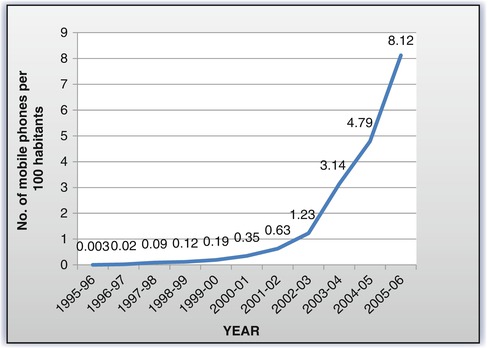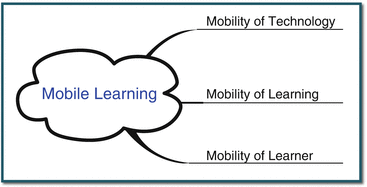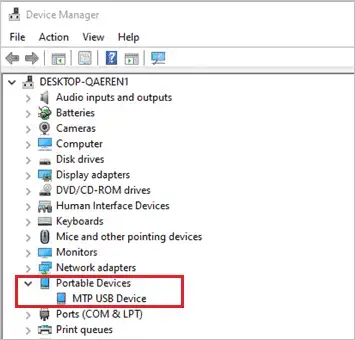- Revolution Education Mobile Phones & Portable Devices Driver Download Windows 7
- Revolution Education Mobile Phones & Portable Devices Driver Download Windows 10
- Revolution Education Mobile Phones & Portable Devices Driver Download Offline
- Revolution Education Mobile Phones & Portable Devices Driver Downloads
Mobile Learning Week: A Revolution for Inclusive & Better Education
© UNESCO
Mobile Learning Week
How do we make educational materials accessible to a girl from a poor family in Africa where over 50% of her female peers will never go to school? How can we get books into the hands of the poorest people on Earth?
The history of mobile phones covers mobile communication devices that connect wirelessly to the public switched telephone network. While the transmission of speech by signal has a long history, the first devices that were wireless, mobile, and also capable of connecting to the standard telephone network are much more recent.
- A major part of modern world is addicted to social networking sites. Mobile Phones let them be active in social media on the move. Mobile Phones Save Money. Just buy mid-range or high-end mobile phone, and ultimately, you become proud owner of many gadgets, the gadgets that are packed in the mobile phone.
- Well, the first mobile phones went on sale for a whopping $4,000 each! The increased demand for mobile phones has caused technology to advance rapidly, with prices continuously falling (until the last few years, where prices have shot up). Regardless, the evolution of mobile phones has been a truly thrilling journey.

The answer, at least in the immediate term, is mobile devices – and more precisely, mobile phones. Mobile devices are the most successful and ubiquitous information and communication technology in human history. They are plentiful in places where books and schools are scarce.
In less than a decade, mobile technology has spread to the furthest corners of the planet. Of the estimated 7 billion people on Earth, 6 billion now have access to a working mobile phone. Africa, which had a mobile penetration rate of just 5% in the 1990s, is now the second largest and fastest growing mobile phone market in the world, with a penetration rate of over 60% and climbing.

Mobile devices are transforming the way we communicate, live and learn. We must ensure that this digital revolution becomes a revolution in education, promoting inclusive and better learning everywhere.

From 17 to 21 February 2014, the UNESCO Mobile Learning Week will explore how mobile technologies can meet the needs of educators and help them improve their effectiveness. Under the theme of “Empowering teachers with technology”, MLW 2014 will consider the benefits as well as challenges associated with mobile learning—such as ensuring equity of devices, online safety, limited mobile-friendly content and the need for teacher training. “Technology can be a powerful education multiplier, but we must know how to use it… On its own, technology is not enough. Empowerment comes from skills and opportunities to use them. It comes from quality content that is inclusive, that draws on local languages and knowledge systems,” said UNESCO Director-General, Irina Bokova.
As mobile technology jumps from the margins of education to the mainstream, teachers will be key to the success of ICTs in teaching and learning. While not a panacea, mobile technology has a clear track record of improving educational efficiency. MLW 2014 will investigate how educators can best utilize mobile devices to achieve national and international learning objectives, including Education for All.
Despite impressive progress, the world is not on track to achieving the Millennium Development Goals by the 2015 deadline. To ensure universal primary education UNESCO estimates that 6.8 million teachers need to be hired worldwide by 2015: 1.7 million are needed to fill new posts and 5.1 million are needed to replace outgoing teachers. These shortages—both current and anticipated— impede a wide range of development efforts by preventing young people from gaining access to the high quality instruction needed to excel in knowledge-based societies. The shortage of trained and motivated teachers is most acute in parts of the world where more and better quality instruction is desperately needed. In light of the urgency of the global teacher crisis, UNESCO wants to better understand how mobile technology can help prepare new teachers and provide professional development to working teachers.
Compounding the challenges of teacher supply, are concerns about teacher quality. Many children who are in school fail to develop basic competencies. As the latest UNESCO Global Monitoring Report reveals, 250 million students worldwide cannot read, write or count, even after four years of school. Close to 775 million adults – 64% of whom are women – still lack reading and writing skills, with the lowest rates in Sub-Saharan Africa and South and West Asia.
Improving educational access and quality requires political leadership, planning and action. To this effect, MLW 2014 will host a policy forum, symposium, research track, 11 half-day workshops, and 80 breakout presentations on the most cutting-edge topics, such as Open Educational Resources; classroom apps for smartphones and basic phones alike, content for tablets and netbooks; mobile learning pedagogics; building mobile learning apps; social media and more.
Mobile technologies hold the key to turning today’s digital divide into digital dividends, bringing equitable and quality education for all.
Back to topAbstract
Revolution Education Mobile Phones & Portable Devices Driver Download Windows 7
The social history of the mobile telephone involves both the history of technological development and an account of changing social and political frameworks into which the new technological developments become integrated. The technological innovations of mobile telephony were established from the 1940s, but it was not until the 1990s that adoption took off. It has been claimed that the mobile telephone revolution can be explained by changes in the way communication happens through social networks, away from old hierarchical forms. Several unique communicative and behavioural patterns have emerged in countries with mass use of the mobile telephone, including texting (SMS) and the development of new social norms. Nevertheless there is still huge global variation in use and development, and more research needs to be conducted which responds to very local patterns of use and reuse.
This is a preview of subscription content, access via your institution.
References
- 1
Agar J: ‘Constant Touch: A Global History of the Mobile Phone’, Icon Books, Cambridge (2003).
- 2
ITU: ‘World Telecommunications Development Report: reinventing telecoms’, (2002).
- 3
ITU: ‘Trends in Telecommunication Reform: effective regulation’, (2002).
- 4
Mobile Operators Association-http://www.mobilemastinfo.com/ information/history.htm
- 5
Roos J P: ‘Sociology of cellular telephone: the Nordic model’, Telecommunications Policy, 17, No 6 (August 1993).
- 6
Fischer C: ‘America Calling: A Social History of the Telephone to 1940’, University of CA Press (1992).
- 7
Geser H: ‘Towards a sociological theory of the mobile phone’, (2002)-http://www.socio.ch/mobile/t_geser1.htm
- 8
Churchill E and Wakeford N: ‘Collaborative Work on the Move’, in Brown B, Green N and Harper R (Eds): ‘Wireless World’, Springer Verlag (2001).
- 9
Haddon L: ‘The Social Consequences of Mobile Telephony’, Framing, Oslo (2000).
- 10
Guardian unlimited (28 March 2003)-http://www.guardian.co.uk/
- 11
Rautiainen P: ‘Mobile communication of children and teenagers’, Case, Finland, Tampere (1997-2000)-http://www.telenor.no/
- 12
Plant S: ‘On the mobile: the effects of mobile telephones on social and individual life’, (2000)-http:/www.motorola.com/mot/documents/ 0,1028,333,00pdf
- 13
‘she’ magazine-http://www.she.co.uk/
- 14
BBC World Service report (2001)-http://www.bbc.co.uk/ worldservice/
- 15
Townsend A M: ‘Life in real-time city: mobile telephones and urban metabolism’, Journal of Urban Technology, 7, No 2, pp 85-104 (2000).
- 16
Ling R: ‘Traditional and fixed and mobile telephony for social networking among Norwegian parents’, in Elstrom L (Ed): ‘Human Factors in Telecommunication’, 17th International Symposium, pp 209-256 (1999).
- 17
Lacohée H and Anderson B: ‘Interacting with the telephone’, in Kraut R and Monk A (Eds): ‘Home Use of Information and Communications Technology’, Special Issue of the International Journal of Human-Computer Studies, 54, No 5, pp 665-699 (May 2001).
- 18
Chihara M: ‘Lying on the go’, Boston Phoenix (16 March 2000)-http://www.bostonphoenix.com/
- 19
Stewart Committee Report-http://www.iegmp.org.uk/
- 20
Sir William Stewart, Chairman IEGMP (April 2002)-http:// www.iegmp.org.uk/report/announcement.htm
- 21
Wireless News Factor-http://www.wirelessnewsfactor.co/perl/ story/7311.html
- 22
Wired-http://www.wired.com/news/wireless/0,1382,52363,00. html
- 23
vnunet-http://www.vnunet.com/News/1131965
- 24
BBC-http://www.news.bbc.co.uk/
- 25
Chapman S: ‘Lifesavers and cellular samaritians: emergency use of cellular (mobile) phones in Australia’ (1998)-http:// www.amta.org.au/files/issues/pdfs/emergency.pdf
- 26
Office for National Statistics: ‘Drug use, smoking and drinking among teenagers in 1999’, London, ONS (2000).
- 27
Charlton A and Bates C: ‘Decline in teenage smoking with rise in mobile phone ownership: hypothesis’, British Medical Journal, 321, p 1155 (200).
- 28
Fortunati L: ‘The mobile phone: new social categories and relations’, University of Trieste (2000)-http://www.telenor.no.fou/prosjekter/ Fremtidens_Brukere/seminarer/mobilpresentasjoner/
- 29
New York Times (4 August 2001)-http://www.nytimes.com/
- 30
Thomson and Craighead-http://www.thomson-craighead.ne
Revolution Education Mobile Phones & Portable Devices Driver Download Windows 10
Author information
Affiliations
About this article
Revolution Education Mobile Phones & Portable Devices Driver Download Offline
Cite this article
Revolution Education Mobile Phones & Portable Devices Driver Downloads
Lacohée, H., Wakeford, N. & Pearson, I. A Social History of the Mobile Telephone with a View of its Future. BT Technology Journal21, 203–211 (2003). https://doi.org/10.1023/A:1025187821567
Issue Date:
DOI: https://doi.org/10.1023/A:1025187821567
Keywords
- Mobile Phone
- Text Message
- Federal Communication Commission
- Social History
- Mobile Telephone
